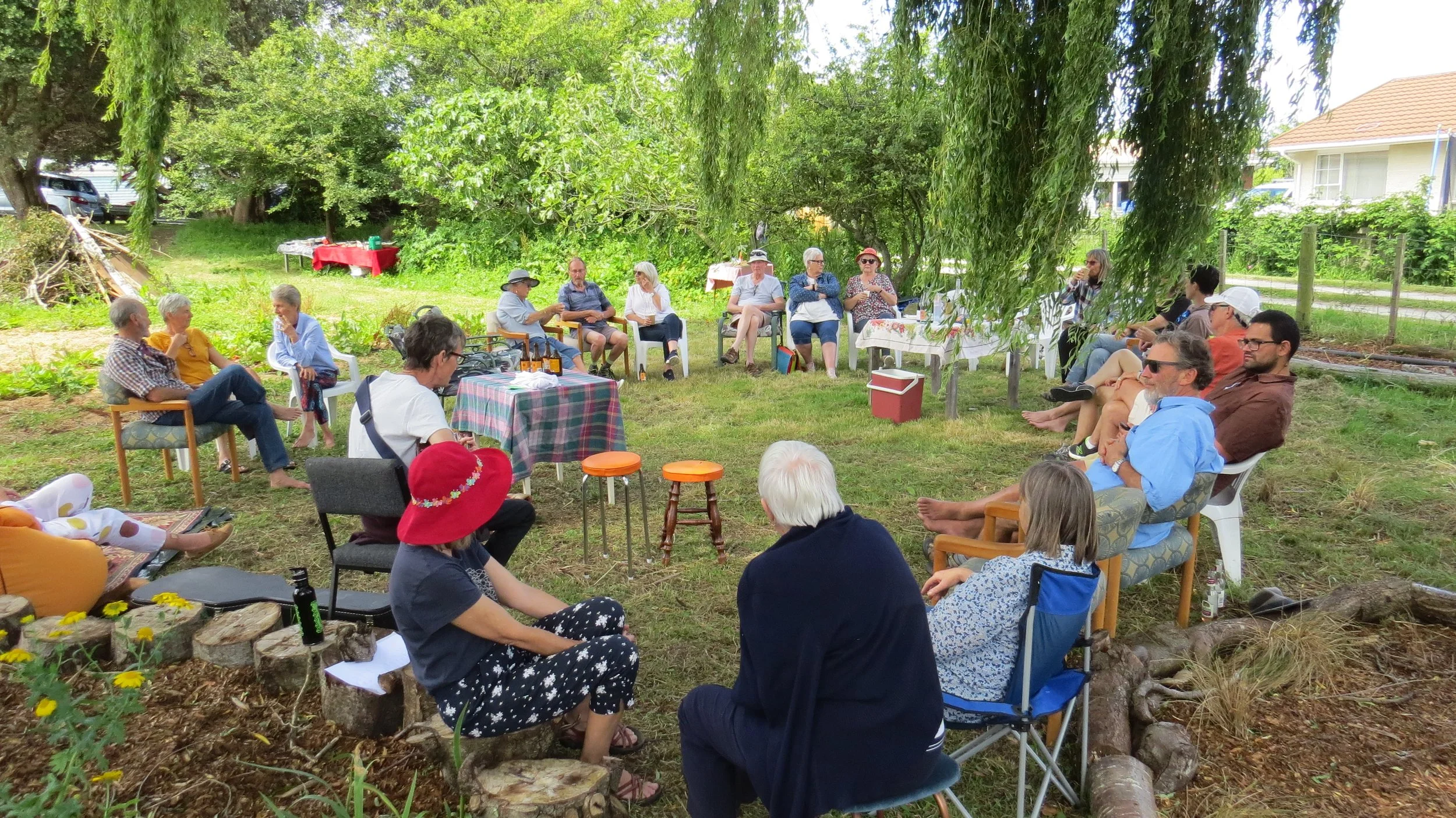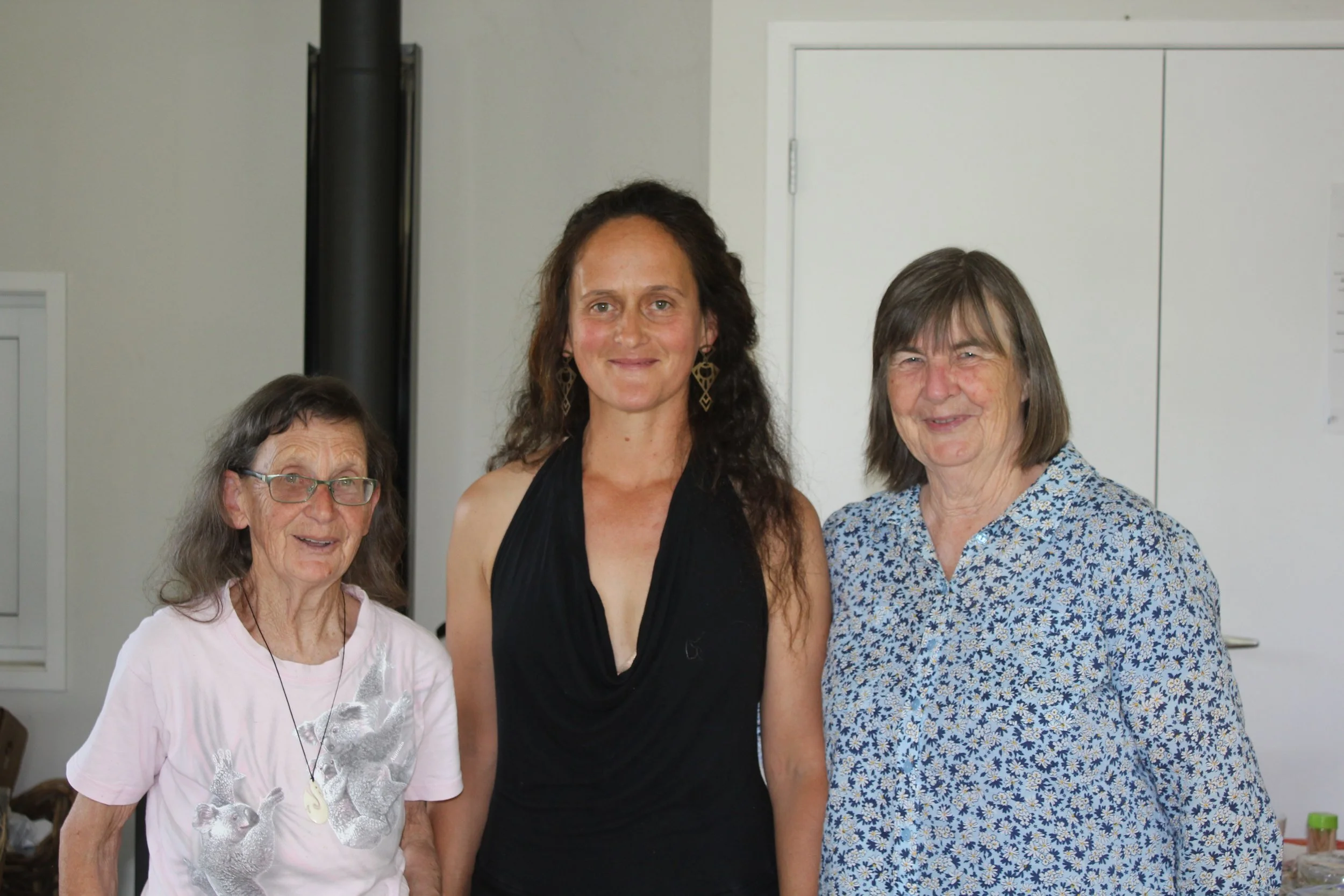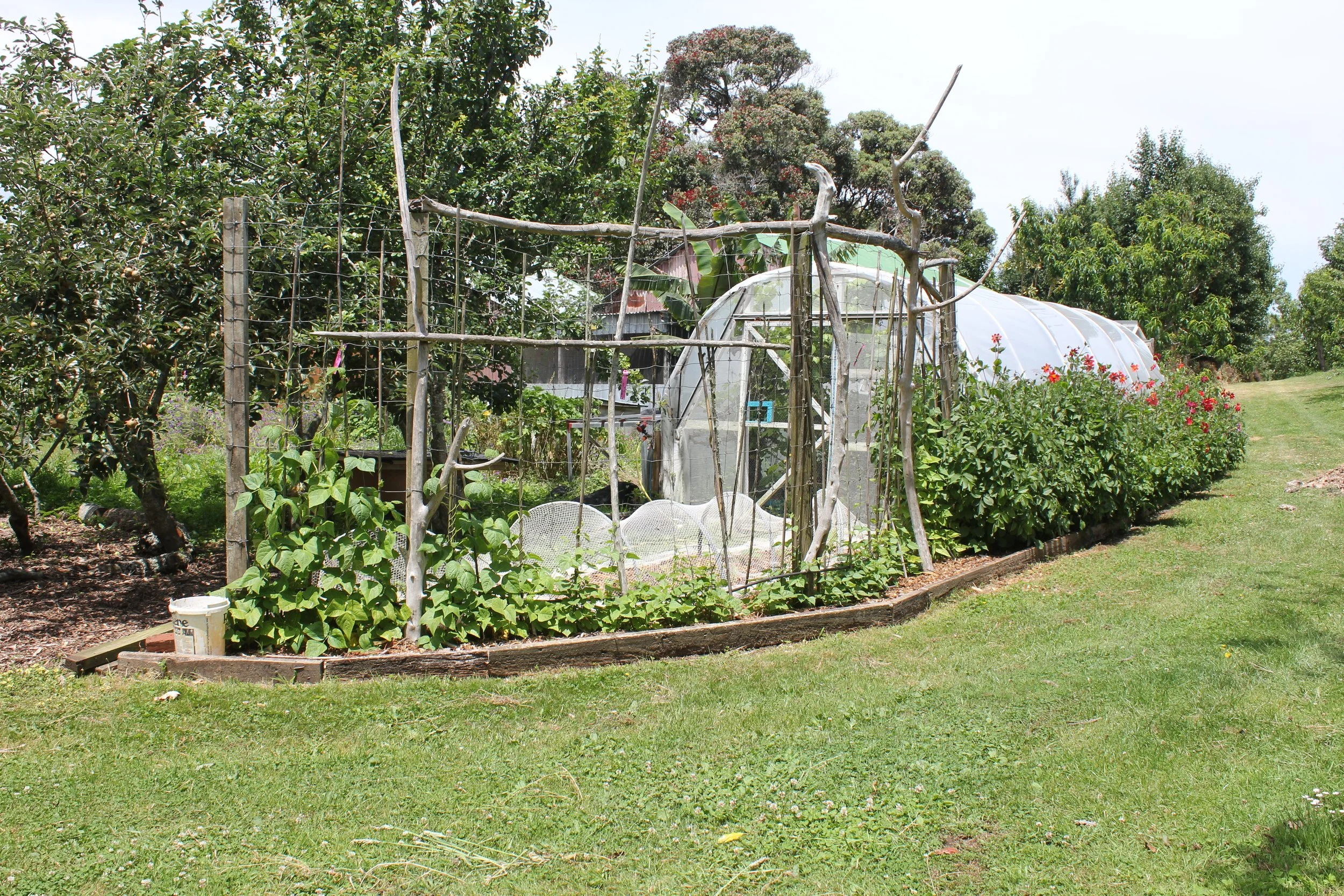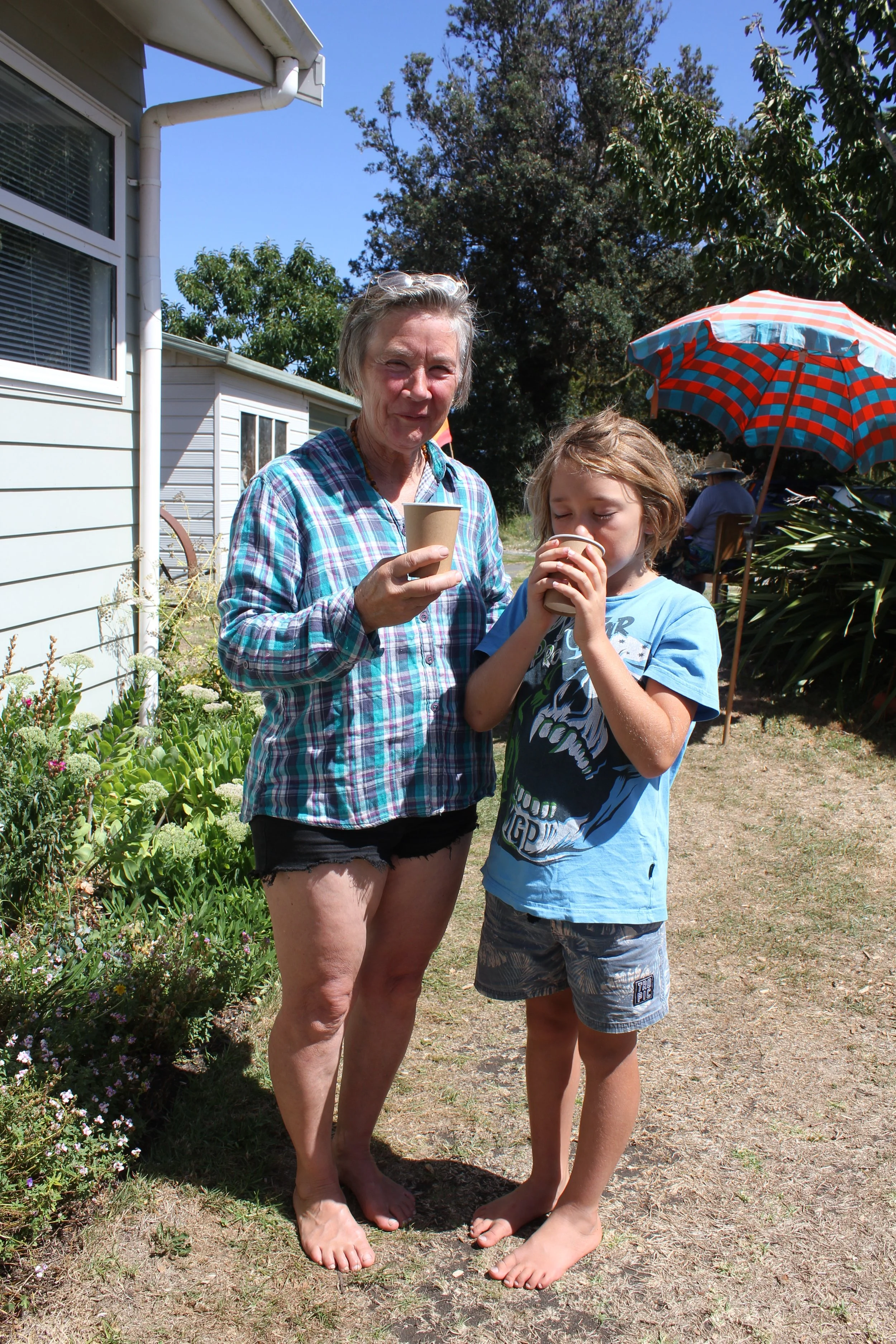Heritage Food Crops Research Trust
Whanganui, New Zealand
The goal of the Heritage Food Crops Research Trust (HFCRT), founded by Mark Christensen, is to reconnect people with the older plant varieties proven to be superior for human health. The HFCRT gardens grow, save, and share organic heritage seeds, plants and trees with local, national and when possible international communities.
HFCRT social media or HFCRT website.
Let food be thy medicine” (Hippocrates)
Thank you Whanganui District Council Climate Action Fund 2022 and 2023 rounds which funded Rachel’s position, allowing for the development of Strategic Planning to guide the property towards long-term sustainability. This included bringing more diversity to the project, including educational programs with schools and supporting the volunteer workforce, integral to the project’s success. The projects on this page were developed over this time. Thanks also to funding support from the Whanganui Community Trust and Horizon Council Community Climate Response Fund.
Volunteer Community
As a non-profit Charitable Trust all work on the property is undertaken by volunteers. This model can have limitations as longer term planning can be difficult.
To value all that volunteers bring to the project, to care for each other, and to build community we have shared meals using farm produce. We encourage and celebrate the unique skills and creativity each person brings to the property, and we share the seasonal surplus. We also hold events to celebrate the work volunteers do, to enjoy the abundance that all help to create.
































Permaculture in Practice
An organic property does not use synthetic herbicides or pesticides, instead requiring manual labour for weed management and targeted pest management. As all labour is voluntary the intensity and repetition had to be reduced for long-term sustainability. New management schedules were adopted to reduce the time spent on invasive climbing Convolvulus which dominated the gardens and orchard canopies through the summer months. Areas were thoroughly weeded of runners and prepared in winter with wet newspaper and/or cardboard. These were covered with layers of arborist mulch to slow soil evaporation, block light and suppress the return of weeds. This layering builds soil, with an abundance of worms and beneficial microbes. Garden beds were also edged with sleepers to reduce the incursion of weeds. Projects to better manage excess water were also implemented, including 2 ponds. Basic principles of oftenest nearest were put into practice.




















These modifications increased the number and quality of seeds and trees, with a huge reduction of time spent on repetitive tasks. By presenting achievable, abundant and well-managed gardens we empower the community with the confidence to grow their own high-nutrition foods, contributing to local and national food security. This more organised and beautiful environment was also beneficial to the mental wellbeing of visitors and volunteers, who could see the progress and rewards of their labour.
Big Garden - Bean Fences and Grafted Fruit Trees
We remade the Big Garden in winter 2023 to prepare for spring planting. Climbing frames are used to support Heritage beans extensively throughout the property, but edging the beds allowed us to better define paths, manage weeds and to grow more productive grafted fruit trees down the centre. This area is now much easier to manage and is more productive in both quantity and quality.











Ponds - Excess Water Storage
Surrounding hills to the north west drain to the property but since storm water exits have been blocked by neighbouring developments this leads to an excess of water in winter, which can create bog areas and rot fruit trees. Works were undertaken in two areas to divert water from gardens, trees and paths to storage pond areas.
In winter the front paddock would become very boggy. We dug the slope deeper, adding spill to path areas to raise them up, and tipping water towards a small pond which overflows to the larger pond at the front boundary. Aberfeldy school students and Bailey Herdmann our wonderful WWoofer from Canada helped plant wetland plantings, Flax, Cabbage trees, Toitoi and grasses. This area has now become a Pūkeko and Duck paradise with the ducks cleaning the pond! It is now our communal area for events with seating all around the willow and a double swing from the branches.
























Berry House and Bean Fences
Previously the area below was used to trial ancient Wheat varieties, but the high humidity of Whanganui resulted in the wheat sprouting and developing mildew. Wheat is also very labor-intensive requiring frequent hand weeding. These varieties are now being trialed with better results in the dry climate of Lincoln University in Canterbury. In Autumn 2023 we converted this area to a BERRY HOUSE to trial seedling varieties of Honeyberries, and a mix of summer crops for seed collection. The area around the shade house had become overgrown with Convolvulus. Previously black plastic was used on a large scale to suppress weeds but this prevented water entering the soil. The plastic was removed, edging and a path was added to allow for ease of access and maintenance around the perimeter and bean fences were relocated into dedicated beds, positioned in full sun for optimal growing.

















Community Education & Events
During this period Rachel and Mark focused on bringing diversity to the project and building educational opportunities by hosting schools and events,
Encouraging colour and creativity Rachel worked with children and volunteers to make signage. These signs welcome people and locate growing areas acting as visual aids for the many different food crops.























Signage
Encouraging colour and creativity Rachel worked with children and volunteers to make signage. These signs welcome people and locate growing areas acting as visual aids for the many different food crops.

















Mural -Berengere Collas
In October 2023 we were lucky to host the extremely talented French artist and Illustrator Berengere Collas who rejuvenated an old seed containment facility with her wonderful mural.
Thank you Berengere for bringing your light and beauty to the Heritage Food Crops Research Trust project!
Thanks also to the helpers who blasted it clean, and to Mark for preparing and undercoating the container so perfectly :)




















